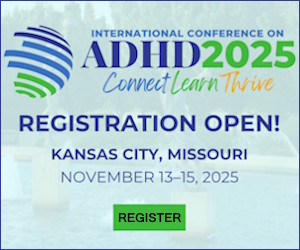ADHD and Driving
Adults and teens with ADHD have many of the same challenges with inattentiveness and distractibility while driving. While additional years of experience can help to improve driving habits, adults with ADHD must constantly be aware of how symptoms can affect their driving. Adults with ADHD tend to be at greater risk for having accidents, receiving traffic tickets, and driving without a license or on a suspended license.
Understanding how ADHD symptoms affect an individual’s driving can help that person make better decisions for safety while driving.
Greater risks
Adults with ADHD have a higher risk for poor driving incidents than adults without ADHD. Even when other disorders are taken into account, adults with ADHD have more accidents than adults without ADHD. In a striking comparison, the untreated symptoms of ADHD in an adult driver can impair the driver’s ability to drive in such a way that it resembles intoxicated driving.
Difficulties in executive function and other symptoms related to ADHD, including poor judgment, risk-taking and thrill-seeking tendencies, all contribute to these increased risks. Inattention can lead to distraction and impulsivity can lead to poor reactions to other drivers or traffic conditions. Adults with ADHD tend to overestimate their driving abilities, even though they may have poorer driving experiences than their peers.
Distracted driving
Most states have distracted driving laws, and many include laws forbidding texting and talking on a hand-held cellphone while driving. In 2012, over 3,300 people died in what the National Highway Traffic Safety Administration (NHTSA) describes as “distraction-affected” crashes—a measurement of accident caused by texting, initiating a phone call, or answering a phone call while driving.
The NHTSA also found that more than three-quarters of all drivers are likely to answer cellphone calls on all, most or some trips while driving. These drivers also admit to rarely considering traffic situations when deciding when to use cellphones.
Drivers with ADHD appear particularly at risk to distractions during periods of low stimulus, or dull, driving. An example of dull driving is long-distance and highway driving, where high speeds can raise the chance of serious accidents. Distraction can be found in simple things, including changing radio stations, checking make-up, drinking, eating, talking with another person in the car as well as daydreaming. Parents who drive young children need to be aware of distractions caused by children or from in-vehicle entertainment systems designed for backseat occupants. When coping with the symptoms of ADHD, these factors increase the risks of poor driving and can lead to car accidents and tragedy.
For adults with ADHD, leaving cellphones and MP3 players put away or turned off, along with not eating or drinking can help to increase attention and prevent accidents. Knowing driving routes beforehand and being familiar with directions to the destination will help limit impulsivity. Visit the U.S. Department of Transportation’s website, distraction.gov, for additional safety suggestions.
Theory and practice
Although adults with ADHD with more years of driving practice have an advantage over younger drivers with ADHD, the symptoms can cause problems for drivers throughout their driving careers. Drivers affected by ADHD need to be especially aware of their own driving abilities as part of their behavioral management of the disorder.
Depending on the individual’s specific symptoms of ADHD, supplemental driver training may need to focus on specific symptoms of ADHD, such as controlling negative emotions or improving skills to pay attention.
Repeated research has shown that stimulant medication greatly improves driving performance for adults with ADHD.
As part of a comprehensive treatment plan, taking medication can make a big difference in reducing the risk of negative driving experiences, including accidents.
As car makers introduce new models, many state-of-the-art cars have options that include heads-up display, texting and cellphone integration and steering wheel cabin controls. Drivers with ADHD may want to pass up all of these options that can be distracting and consider research showing manual transmission to be a better choice because of the need for increased attention in driving habits.
Safe driving tips
Drivers affected by ADHD can improve their driving skills and increase their safety on the road by doing the following:
- Reduce distractions in the car, including using electronics. This means turning cell-phones off completely, or otherwise disabling all “notifications.”
- Know state traffic laws, including the correct use of turn signals/indicators, blinkers and speed zone requirements. Contact your state department of motor vehicles if you have questions about particular laws.
- Attend and pass a driver education program that addresses ADHD concerns if necessary.
Work with your health-care provider to develop and follow your ADHD treatment plan. In doing so, consider the role medication has been shown to play in improved driving ability.
Insurance
All drivers should know their state’s motor vehicle insurance requirements. Drivers with ADHD may also want to discuss additional insurance coverage that meets their needs with an insurance agent or representative from a reputable company. Additional umbrella liability policies can offer protection from personal injury lawsuits.
Drivers who have had repeated accidents, including fender-benders, often find their insurance premiums are increased. As drivers with ADHD tend to have more accidents than other drivers, they can end up paying more for car insurance than other drivers. Drivers should discuss this concern and their personal driving record with an insurance agent and look for a plan that is within their budget and has safe-driving rewards.
Related topic


